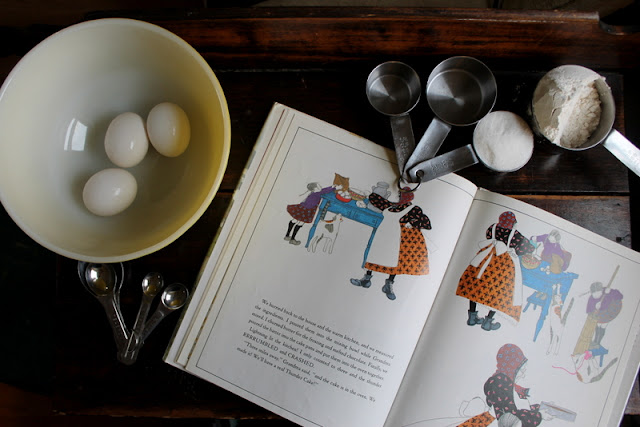I saw this book in the new section at our local library this spring. I was smitten as soon as I saw the title, and the synopsis on the inside flap only increased my interest. Young book loving girl moving to Alaska during the Great Depression as part of FDR's Matanuska Colony? Oh yes. Having lived in the Matanuska Valley of Alaska for several years my self, I couldn't help but glom onto this with the highest hopes.
And for the most part, it succeeds. I was initially a little leary of all the Laura Ingalls Wilder references on the back of the book. For whatever reason, the publisher made it sound like Terpsichore was running around, checking off some sort of Larua Ingalls Wilder checklist. Since Laura Ingalls Wilder had only published one or two books during the time period this book was referring to, I felt that was a little inauthentic sounding. People nowadays try to be just like Laura or run around in a sunbonnet pretending, but in the 1930's, Laura Ingalls Wilder was just a new, interesting, and fairly popular author. She had not attained cult status.
Fortunately, Terpsichore just admires Laura and only very occasionally mentions her. She isn't basing every decision on What Would Laura Do? So now we have a girl moving to Alaska who admires Laura Ingalls Wilder. How cool is that?
But it gets cooler! Terpsichore (pronounced terp-sick-o-ree) loves gardening and was active in her local library in Wisconsin. She is determined to bring culture (in the form of a library) to the last frontier and to grow the largest pumpkin Alaska has ever seen. She sets up the first library in Palmer, storing books in one of the Matanuska Colony tents. Terpsichore is fictional of course, but Palmer Library
did begin as a collection in a Matanuska Colony tent. Carole Estby Dagg does a great job of seamlessly mixing fact with fiction. (Check out the
history of Palmer Library if you would like to see where the facts come in.)
And all kids need a good librarian to admire.
Carole Estby Dagg is a relatively new author, leaving her librarian job to learn more about writing. She published her first book at 67 (speaking of Laura Ingalls Wilder...) and this is her second book. She says that once upon a time, she was the library girl at their local school--doing story time for little kids and helping kids check out books. There is a lot of Dagg in Terpsichore. Also, Dagg's son lives in Palmer, AK, so she has a vested interest in all this history.
Terpsichore is a strong, determined young lady. She really wants to move to Alaska to stick by her close friend, whose family decided to take advantage of FDR's program and move from the collapsing economy of Northern Wisconsin. Terpsichore's father is interested in moving to AK as well, but you have to be on relief to qualify. He has worked and worked to not go on relief, so this seems a bit raw to him. Terpsichore's mother is definitely anti-AK. She would prefer living with her rich mother in Madison.
A little careful conniving by Terpsichore, and a good deal of convincing for her mother, gives the family a chance to be part of the Matanuska Colony. Terpsichore's enthusiasm wanes as she learns her best friend's family is not moving to Alaska, but their course is set and she must leave her friend behind. North they go!
The entire process of getting to Alaska, all the bureaucratic hoops they must jump through, is fascinating. There was a lot of careful research to make it all seem authentic. I feel like Carole Estby Dagg could have done a better service to Alaskan scenery, though. Having been through the inside passage and knowing the area she is talking about, the landscape is completely staggeringly beautiful. Terpsichore doesn't seem to notice. There are brief mentions of it, but not the rhapsodical odes that it seems to merit. But then, that might be more in keeping with most young kids world view. Terpsichore is more interested in the people she meets than the mountains. I just happened to be a shy kid who liked to stare at the landscape.
Arriving in Alaska in the spring and living in a colony of tents is just as muddy and mosquito filled as you would think it would be. Terpsichore's mother is more convinced than ever that living with her mother is a better idea than this muddy, mosquito filled tent town, so she gives a year and a half ultimatum. If they haven't made good by then, they get to move back to Wisconsin. Terpsichore sets about making sure that doesn't happen, making friends, settling in, and making Alaska a home along the way. Her efforts to make her mother love Alaska bring her finally to the Alaska State Fair, at the end of August.
This is a book about a young girl finding her way in the world while America's last frontier is being settled. Terpsichore's determination and pluck make you love her, while her set backs make her relatable.
There are several notable historical facts that Dagg includes, like Will Roger's stop through Palmer that makes this book worthwhile reading for young kids learning American History.
This is a good 'un!



















































